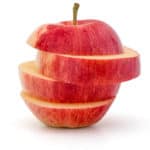Hep C Advisory: Where Salt Hides
Hepatitis C has been dubbed a “silent epidemic,” because symptoms rarely surface until the virus has caused irreversible liver damage. Unfortunately, a large percentage of Americans infected only find out about their illness after Hepatitis C has severely scarred their liver. Known clinically as cirrhosis, living with this severe liver scarring requires additional cognizance of its aggravating factors. Besides complete elimination of alcohol, curbing sodium intake is one of the first things someone with cirrhosis must learn to do. Many people may consider the table salt shaker as their primary source of sodium; however, there are many food sources that secretly contain astronomical amounts of salt.
An estimated four to five million Americans are currently infected with Hepatitis C, a liver infection that becomes a lifelong illness for a majority of people. If those with chronic Hepatitis C are unable to eliminate the virus from their body, progressive damage to the liver can ensue. When the rate of liver cell injury outpaces the body’s ability to regenerate new liver cells, scar tissue accumulates. Over the course of many years, this leads to cirrhosis, the accumulation of scar tissue that changes the liver’s topography – into a hardened, shrunken organ, that functions sub-optimally.
The primary reason someone with cirrhosis should avoid salt has to do how much fluid is retained in the body:
- Due to the principle of osmosis, salt in the blood draws water out of the surrounding cells.
- This drawing out of water is the body’s way of equalizing the salt concentration on either side of the cell.
- Equalization occurs from drawing water out of the cell instead of pulling salt into the cell, because water flows much more readily across the cell’s membrane than salt does.
Thus, the more salt in a person’s diet, the more fluid the body retains in an effort to dilute the salt. Unfortunately, those with cirrhosis are more vulnerable to being harmed by high sodium consumption and its resulting fluid retention.
Also known as ascites, fluid accumulation in the abdomen is the most common consequence of cirrhosis. Ascites is the result of several mechanisms:
- Blood Pressure – As cirrhosis progressively scars the liver, its ability to effectively filter blood is reduced. This reduction lowers blood volume, which also lowers blood pressure. When blood pressure is low, signals are sent to the kidneys instructing the body to retain salt and fluids.
- Albumin – The liver produces albumin, a protein responsible for holding fluid inside the blood vessels. Cirrhosis lowers blood albumin levels, resulting in fluids seeping out of the leg and abdomen tissues.
- Portal Hypertension – When cirrhosis causes unfiltered blood to back up, the pressure inside liver blood vessels rises (portal hypertension). Consequently, some of the fluid inside the highly pressurized portal vein leaks out to prevent the blood vessel from bursting.
Besides expanding abdominal girth, ascites can cause several complications, such as abdominal pain and discomfort, difficulty breathing, infection (bacterial peritonitis), hernia, fluid filling the lungs and heart failure. Because every gram of sodium consumed typically results in the accumulation of 200 milliliters of fluid, salt restricted diets are essential for those with cirrhosis.
Salt can be sneaky, abundant in curious places. Thus, identifying the following sodium-hiding spots can help with salt minimization. For those with cirrhosis from Hepatitis C, health professionals typically advise restricting sodium intake to 500 to 1,000 milligrams per day.
Reading all food labels is necessary to circumvent excess salt consumption. In the real world, we are sometimes lax in our label reading routine. Nonetheless, the following four food groups require this practice to avoid consuming unnecessarily high amounts of sodium:
- Soda – Whether diet or regular, many sodas have a surprising amount of sodium. An investigation of one popular soda manufacturer’s website revealed several of their products contained between 40 and 65 milligrams of sodium per serving. Considering many people consume several sodas per day, that can add up to a lot of excess sodium.
- Soup – Canned soups contain extremely high amounts of sodium for a supposedly healthful meal. Make sure to check soup labels, because just one cup of soup can harbor close to or over 1,000 milligrams of salt. While reduced sodium soups are better, they can still have more sodium than most people realize. Always check the sodium content in canned soup.
- Beans – Loaded with fiber and protein while low in fat and cholesterol, beans are a staple for many health conscious folk. However, the canned versions often have extraordinary amounts of salt. One cup of plain baked beans can have over 1,000 milligrams of sodium, while ½ cup of black beans can have nearly 500 milligrams. Despite being less convenient, cooking dried beans is a great option. Otherwise, seek out low sodium beans, restrict serving sizes and always check the label.
- Condiments and Sauces – While some condiments and sauces are obviously salty, the amount of sodium hiding in these refrigerator staples is surprising. For example, a leading brand of soy sauce contains 920 milligrams of sodium in just one tablespoon and ½ cup of some marinara sauces has upwards of 500 milligrams. The problem is that most of us go far beyond the serving size quoted on the label.
The four food categories listed above pose a problem to anyone who must restrict their salt intake. Representing the need for vigilance in reading nutrition labels, these foods are not the only high sodium consumables. Living with Hepatitis C that has progressed to cirrhosis is far from easy, but reducing sodium amounts will eventually become second nature. To minimize complications from ascites, ease the pressure in your blood vessels and keep a damaged liver from wrecking more havoc, avoid (or at least reduce) your inclusion of foods that pack loads of salt into your body.
References:
http://productnutrition.thecoca-colacompany.com/welcome, Nutrition: Connection, Retrieved November 21, 2010, The Coca-Cola Company, 2010.
http://www.everydayhealth.com/diet-and-nutrition-pictures/uncovering-hidden-salt-in-food-1028.aspx?xid=nl_EverydayHealthDietandNutrition_20101109&xid=nl_EverydayHealthHealthyAging_20101116, Sneaky High-Salt Foods, Jennifer Acosta Scott, Retrieved November 17, 2010, Everyday Health Inc., 2010.
http://www.liverdisease.com/diet.html, Diet and Hepatitis C, Retrieved November 17, 2010, Melissa Palmer, MD, 2010.
http://www.liversupport.com/wordpress/2009/08/important-facts-about-salt-and-cirrhosis/, Important Facts About Salt and Cirrhosis, Nicole Cutler, L.Ac., Retrieved November 17, 2010, Natural Wellness, 2010.







